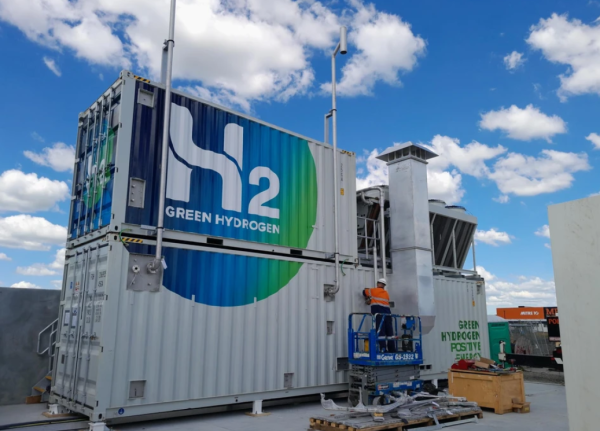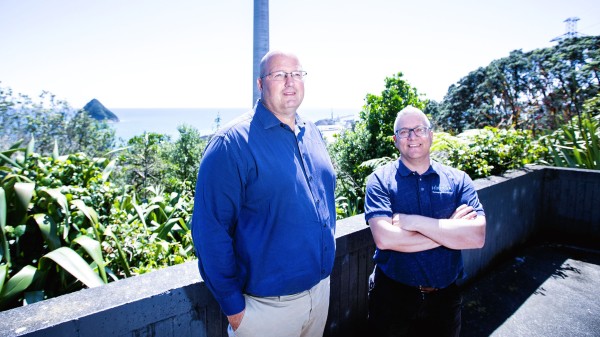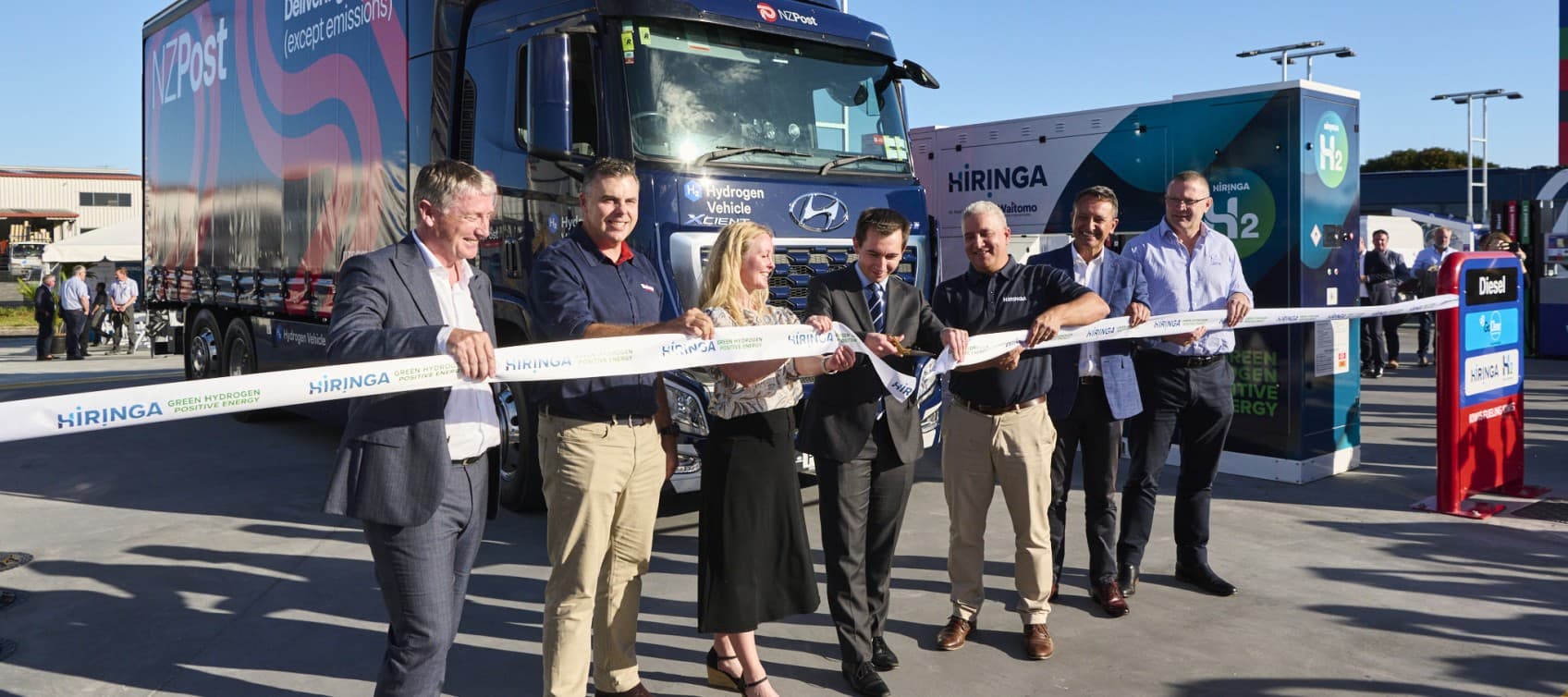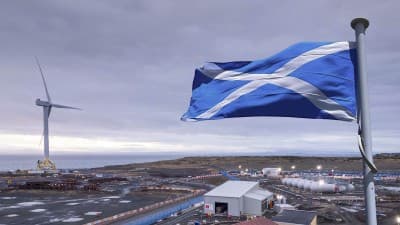Kiwi company Hiringa has opened the first hydrogen refuelling station in New Zealand – the start of an Australasian-first hydrogen network.
Located in Wiri, South Auckland, the hydrogen station is one of three Auckland sites now operational, with another 21 sites in development across Aotearoa.
“Heavy transport plays a vital role in our economy, but it’s also a significant contributor to our national emissions,” says Andrew Clennett, CEO of Hiringa. “As a first-of-its-kind across Australasia and one of the first networks set up globally to service heavy transport, the initiative addresses this major challenge by providing operators with the infrastructure they need to switch to zero-emission transport in an efficient, scalable and commercially viable manner.”
Long range, zero emissions – the hydrogen advantage
Hydrogen is a fantastic fuel choice for the heavy transport industry because it not only produces zero carbon emissions, it’s also energy-dense and provides excellent range. Hydrogen is abundant and we don’t need to import it from overseas, so it can also support New Zealand’s energy resilience and security.
“There are many advantages to using hydrogen,” Clennett explains. “Storing excess electricity from sustainable sources like wind and solar is one of today's biggest challenges; hydrogen lets us capture that energy and use it when we need. Hydrogen fuel cell vehicles can be filled in minutes and a full hydrogen tank weighs much less than a bank of batteries. This makes them ideal for heavy vehicle transportation and high utilisation fleets.”
Long-haul trucks produce a quarter of New Zealand’s heavy vehicle emissions, even though they make up only 4% of the fleet, according to Clennett. Switching to hydrogen technology could make a huge dent in a hard-to-decarbonise industry.
“If you change a truck from diesel to hydrogen, it’s [equivalent to] 150 cars off the road,” Minister for Transport and Energy Simeon Brown, told RNZ at the launch of the Wiri station. “So that is a significant transition and significant opportunity for decarbonisation.”
Hydrogen vehicles already in action on Kiwi roads

Picture from Hiringa of refuelling station.
Each Hiringa refuelling station produces its own renewable hydrogen, splitting water into hydrogen and oxygen through electrolysis. The hydrogen is then compressed and stored onsite so it can be dispensed into vehicles.
Hiringa stations take around 10 to 20 minutes to refuel a heavy vehicle with green hydrogen. The station can refuel up to 60 vehicles each day, and on opening day it fuelled a bus, a big rig, and the NZ Post delivery truck.
Fully fuelled, the NZ Post truck has a range of around 400km and has been operating in New Zealand since 2023, usually covering around 350km a day. It’s already travelled more than 70,000km, which would have required around 30,000 litres of diesel in a traditional heavy vehicle. This equates to the XCIENT having saved 80 tonnes of carbon dioxide equivalent from being emitted into our atmosphere.
“With rapid refuelling now available this will allow us to operate the hydrogen truck seven days a week, 24 hours a day, with zero emissions,” David Walsh, CEO of NZ Post, said in a press release. “We’re thrilled to see this national network come together.”
100 stations operating by 2028 across Australasia
Hiringa plans to have 24 stations operational by 2028, allowing the trucking industry to start scaling up its transition to renewable fuels. Beyond 2030, Hiringa hopes to have 100 stations in New Zealand, and it’s also working on a refuelling network in Australia with a goal of 200 stations in total.

Photo of Clarus CE, Paul Goodeve (left) and Hiringa CEO, Andrew Clennett
Clarus is working with Hiringa to help advance a green hydrogen economy in Aotearoa, looking at the possibility of using Clarus pipeline infrastructure for its refuelling stations. And with both businesses based in Taranaki, we’re looking forward to the day that the planned Hiringa station in New Plymouth becomes operational.
To learn more about how Clarus is supporting the transition to a net carbon neutral New Zealand, visit Future of Energy.





